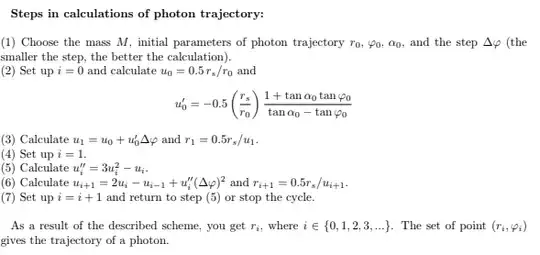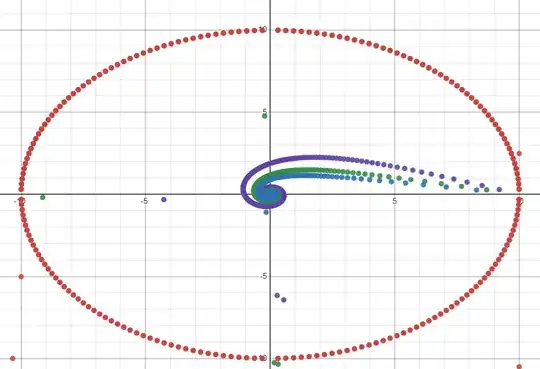I am currently working on some work with neutron stars so this led me to calculations of photon trajectories in curved spacetime.
These are the steps I followed to write code that would produce cartesian coordinates for me to graph.
I utilized this equation to form the steps listed above.
This is the graph of various trajectories when the photon is initialized at phi=0. In these scenarios the only variable adjusted is initial direction of photon motion(alpha). When alpha=pi/2 I get this circular trajectory. When alpha=pi/3, pi/4, and so on, I get the rotating spiral path which appears to be correct. Why is it that the graph is circular? Is this incorrect physically? It is important to note that I used polar coordinates in my calculations then converted back to cartesian.


